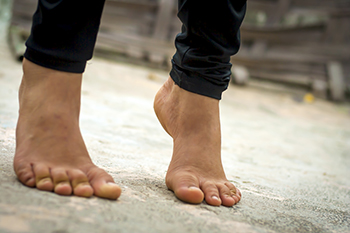1648 US Highway 130
North Brunswick, NJ 08902

The human foot is a marvel of anatomical engineering, consisting of 26 bones and about 100 ligaments that work in concert to support movement and balance. When taking a step, the foot's complex structure enables a smooth and efficient motion. As the heel strikes the ground, the ligaments and bones absorb and distribute the impact, while the arch provides essential support and flexibility. The toes then push off the ground, aided by a network of ligaments that stabilize the bones and facilitate propulsion. This intricate interplay of bones and ligaments ensures that each step is controlled and cushioned, highlighting the remarkable design of the foot's anatomy in enabling mobility and stability. Many people experience foot pain for various reasons, which may include injuring a part of the foot. If this applies to you, it is suggested that you consult a podiatrist who can determine the cause and offer you effective treatment solutions.
If you have any concerns about your feet, contact Dr. Robert Fink from Brunswick Foot & Ankle Group. Our doctor can provide the care you need to keep you pain-free and on your feet.
Biomechanics in Podiatry
Podiatric biomechanics is a particular sector of specialty podiatry with licensed practitioners who are trained to diagnose and treat conditions affecting the foot, ankle and lower leg. Biomechanics deals with the forces that act against the body, causing an interference with the biological structures. It focuses on the movement of the ankle, the foot and the forces that interact with them.
A History of Biomechanics
Modern technological improvements are based on past theories and therapeutic processes that provide a better understanding of podiatric concepts for biomechanics. Computers can provide accurate information about the forces and patterns of the feet and lower legs.
Understanding biomechanics of the feet can help improve and eliminate pain, stopping further stress to the foot.
If you have any questions please feel free to contact our office located in North Brunswick, NJ . We offer the newest diagnostic and treatment technologies for all your foot and ankle needs.